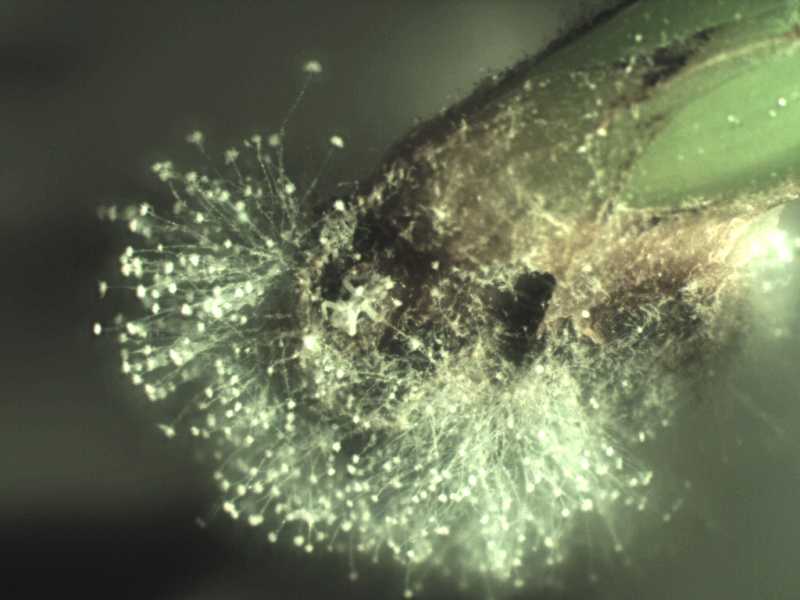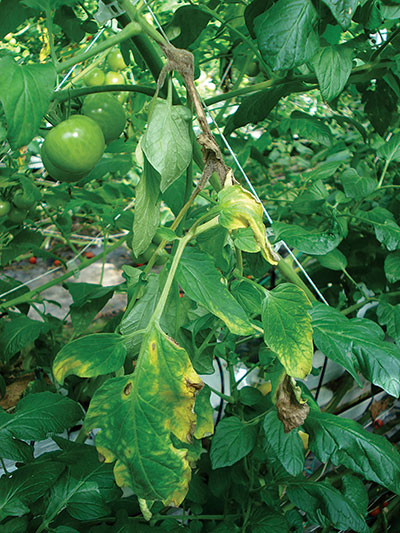
In your holding area, keep plants from different sources (e.g., different greenhouses) as far apart as possible. Obvious symptoms of impatiens downy mildew may not appear for five to 14 days. Keep them in a holding area and watch them for symptom development. Once you have purchased your impatiens, DO NOT plant them right away. Inspect impatiens plants carefully for symptoms of downy mildew before buying them. These types of impatiens appear to be resistant to or tolerant of impatiens downy mildew. If you decide to plant impatiens in your garden, consider using New Guinea impatiens or its hybrids. Plants such as alternanthera, begonia, coleus, iresine and torenia are possible alternatives to impatiens. obducens) and limit the impact of diseases when they occur. A diverse plant selection can limit the spread of disease-causing organisms (like P. How can I avoid problems with impatiens downy mildew in the future? Use a wide variety of bedding plants in your garden. DO NOT use fungicides on plants that are showing symptoms as such treatments will not be effective. These plants are likely infected, but not yet showing downy mildew symptoms. Also consider removing all impatiens within a three foot radius of symptomatic plants. If you see impatiens downy mildew, remove symptomatic plants (roots and all), place them in sealed plastic bags and throw them away in the garbage ĭO NOT compost these plants. How can I save a plant with impatiens downy mildew? Plants with impatiens downy mildew are unlikely to recover and can be a source of sporangia that can infect other impatiens plants, as well as oospores that can allow P. obducens can be introduced via impatiens seed is unclear. These spores can be found in soil and in infested plant debris. obducens can potentially overwinter in a garden in the form of specialized spores called oospores. Cool, wet/humid weather favors disease development. obducens can spread from plant to plant by wind or rain splash. It can also be introduced by windborne spore-like structures called sporangia. This organism is commonly first introduced into a garden on infected impatiens transplants. Where does impatiens downy mildew come from? Impatiens downy mildew is caused by the fungus-like water mold Plasmopara obducens. The most distinctive characteristic of impatiens downy mildew is the presence of a fuzzy white material (actually the organism that causes the disease) that develops on stems, buds and particularly the under sides of leaves. Eventual death of affected plants can occur.

As the disease progresses, leaves and flowers drop off, leaving a bare stem. Stunting and reduced flowering are other common symptoms. Initial symptoms include an irregular yellow-green discoloration of leaves that can be confused with spider mite feeding injury. What does impatiens downy mildew look like? Symptoms of impatiens downy mildew often first occur on leaves near the tips of branches. Other common garden ornamentals are immune to impatiens downy mildew and thus not affected by the disease at all. hawkerii) and its hybrids appear to be either resistant to or tolerant of the disease. balsamina), as well as native jewelweeds ( I. The disease affects garden impatiens ( Impatiens walleriana and I. Impatiens downy mildew has been so destructive in many areas that it has made impatiens unusable as a garden ornamental.

The disease has recently become a serious issue in the United States, including Wisconsin. What is impatiens downy mildew? Impatiens downy mildew is a disease that has become a serious threat wherever impatiens are grown. White,fuzzy growth on the lower leaf surfaces of impatiens leaves is typical of impatiens downy mildew.


 0 kommentar(er)
0 kommentar(er)
